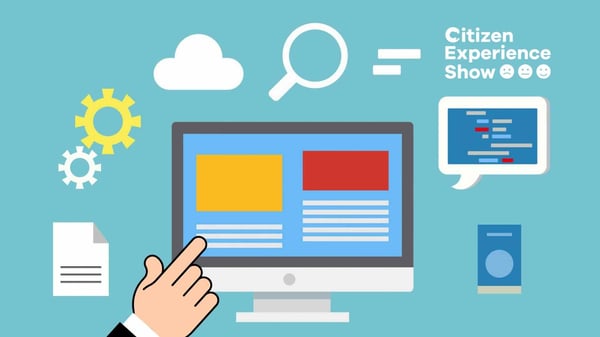How to design more inclusive public services

How can public sector organisations ensure that services are designed to the highest accessibility and inclusion standards that leave no citizen behind? Government and NHS executives shared their insights on a recent discussions panel at the Government Transformation Show. Here are the key takeaways.
Ensuring inclusion of services through user co-creation
The Cabinet Office recently set up a Grants Application Programme (GAP) with the aim of modernising and streamlining access to government funding applications. Through this pilot, which will run until March 2023, the Cabinet Office is creating a one-stop shop that will allow grant seekers to find all the information they need about about the process in a single, easy-to-navigate place.
According to baseline research by the GAP team, an organisation spends an average of 54 hours looking for grants, with numerous costs involved, said Lucia Webster, Deputy Director of Digital Delivery at the Government Grants Management Function, the Cabinet Office unit responsible for GAP.
“We’re trying to make the process easier for these organisations by providing clearer information on eligibility criteria up front, so that people don’t go through the time and expense of applying for the wrong things,” Webster explained.
The GAP team is co-creating the pilot with users to ensure that the UX meets their needs and expectations. In December, the Government Grants Management Function established a grants community of interest, asking for volunteers for the GAP user research panel. The response left Webster astonished.
“I was expecting maybe 30 people that might help us, but we actually received over 600 responses and over 500 on our user research panel,” she said. “That tells me that people want the service and it’s up to us to listen and build it the way they want it.”
Setting standards
For Francoise Risbourg, Head of Business Innovation and Customer Experience at the NHS Business Services Authority (NHSBSA), the public body that supports the NHS’s delivery objectives, service design also starts with the users. Her role involves driving a customer-centric culture shift that ensures a quality customer and citizen experience.
“It's about unifying the team around that common vision and ultimately looking at how we can innovate and be a catalyst for better healthcare.” Risbourg said.
Instead of looking at specific user interactions, her team analyses the whole end-to-end journey for the service design.
This involves continuous research and engagement with service users since expectations and demand are constantly changing - and design should evolve with them. NHSBSA has launched a customer charter with basic principles on the communication and accessibility of services, such as avoiding jargon or ensuring that the right wording is used.
“We start by trying to understand what our customer wants to achieve and how we can deliver that,” Risbourg said. “It’s about user inclusivity and user-centred design. There’s also a part around education of the team that delivers that great customer experience.”
Inclusive design is also important from an internal organisation point of view and as such, the service co-creation process should also include the frontline staff delivering the service and the developers and technical staff creating it, added Mark Smitham, Lead for Public Sector Solutions EMEA at low code app development platform provider Mendix.
“We're not just concerned about trying to make the developers' life faster and easier - this is about developing with frontline experts who know their processes,” said Smitham. “It's not only about creating inclusive design for the end user, but also for the employees internally.”
Measuring the impact and reach of services
As a government service, the GAP pilot must follow basic accessibility requirements, including meeting a minimum level AA of the Web Content Accessibility Guidelines (WCAG 2.1) and including an accessibility statement explaining how accessible the service is.
However, Webster and her team wanted to go beyond that and decided to bring in external auditors through the GAP user research panel to ensure that the pilot is designed to the highest possible accessibility standards. They have also engaged with the Disability Unit at the Cabinet Office that gives them useful feedback on the service.
“We went out and asked people if they had any particular accessibility needs and if they would be willing to test the service and mark our homework to see if it was right,” Webster said. “You have to come at it from different angles. Now, we are currently recruiting people with different disabilities to test the service.”
Webster’s team is also tackling the digital inclusion dimension of the pilot to understand the reach of the service through digital channels. Last week, they launched a digital inclusion survey within their community of interest to measure the extent of the problem, but Webster acknowledged that even this initiative presents problems as it might not reach the intended groups because of the format used - email.
“Somebody who's totally digitally excluded, would obviously not get that email survey,” she continued. “So we asked them to look at their organisation and colleagues and perhaps fill it on their behalf. That will give us a good baseline because if the services are not adapted to the people who use them, then there’s no point.”
Risbourg’s team also relies on data and insights to create a positive customer experience and ensure that services are fully accessible and inclusive. Metrics used include traditional customer satisfaction surveys and net easy score, the latter a measure that tells how easy customers find it to interact with an organisation.
“We report on that on a constant basis and share it with our board,” Risbourg said. “We are still in the early days of our journey and during the past few months, we have been looking across the organisation at what else we should be assessing, so we are redefining those measures, trying to build up from that net easy score, and looking at those elements that we need to be stronger at.”
Smitham added that to avoid the risk of failing to act on users’ feedback and insights, organisations need adequate tools that allow developers and technical staff to integrate them in the development of the service in an agile and effective way. When the metrics are recorded separately from the service design process, it hinders the ability of the technical team to include it in the development process.
He said: “It is really important to make it as easy as possible for the teams that are churning out these services to have access to those metrics. Otherwise, we're just measuring and listening to people, but it won't be reflected in the end service.”
'Designing Services for (All) Citizens', a panel discussion supported by Mendix, is available to watch on demand here.





